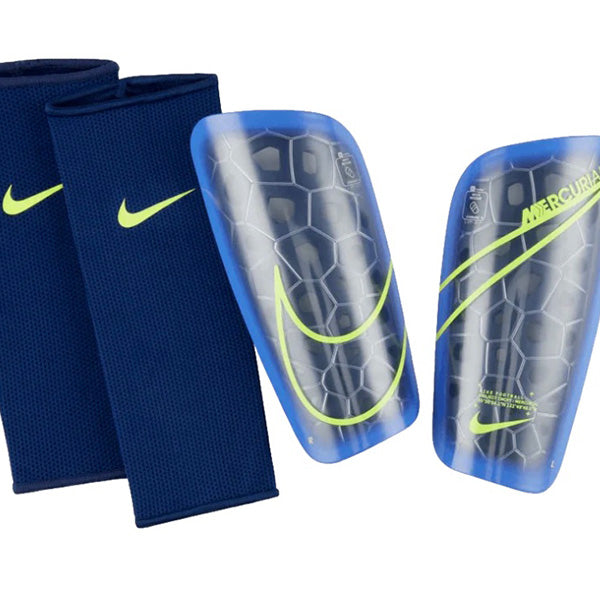When playing soccer, shin guards are just as important as the soccer ball itself. Shin guards are used from the moment you begin to play soccer to the last second you are on the field and are there to protect the players from abrasions, contusions, and fractures to the lower leg.
There are two sides on the shin guard itself, the outer cover and the inner shell. The outer cover is a hard material like polypropylene plastic. This creates a hard exterior to have more protection. The inner shell is a low density foam padding with high shock absorption. This lets the shin be in contact with something softer than plastic while also providing protection.
Some are also made of fiberglass, which provides a stiff, sturdy, and lightweight layer of protection. Shin guards can also be made of foam rubber, which is less protective and sturdy but is lighter than fiberglass.
There are three different types of shin guards, but two are used more than the third.

Slip-in shin guards are the smallest and lightweight version of shin guards, only covering the shin. These usually come with compression sleeves, but they are not necessary to use. A snug sock, compression sleeve, or tape will keep these shin guards in place. More advanced players can be seen wearing these as they provide less protection than other versions. These types of shin guards also allow more freedom to move.

Full length shin guards have the highest level of protection because it covers the shin and the ankle. These shin guards have an elastic strap at the top of the shin guard and a material that wraps around the bottom of the foot to keep the shin guard in place. Having this material go around the bottom of the foot means that there will be extra material covering the ankle, providing more protection. If a player wants to have a full length shin guard but does not like the ankle guards, there are removable ankle guards in certain types.
Since this shin guard provides the most protection, many younger players will choose these because of the added protection. Parents like this option for their children because of their concern about injury, these are the best to prevent that.

Shin socks, the least popular out of the three, are soccer socks and shin guards combined into one.
When wearing shin guards, they should sit an inch below the bump just under your knee and end an inch or two above the ankle. Playing with shin guards that are too big or too small can create running issues, become uncomfortable and provide less protection.
Midfielders can get away with wearing any of these shin guards. If you are a midfielder looking for shin guards, it depends on your style of play. Are you a defensive midfielder who likes to go in for big tackles or are you an offensive midfielder who likes to make runs into free space? Either way, all these shin guard options are fit for any position.
Shin guards are one of the most important pieces of equipment in soccer, make sure you have the correct ones for you.



